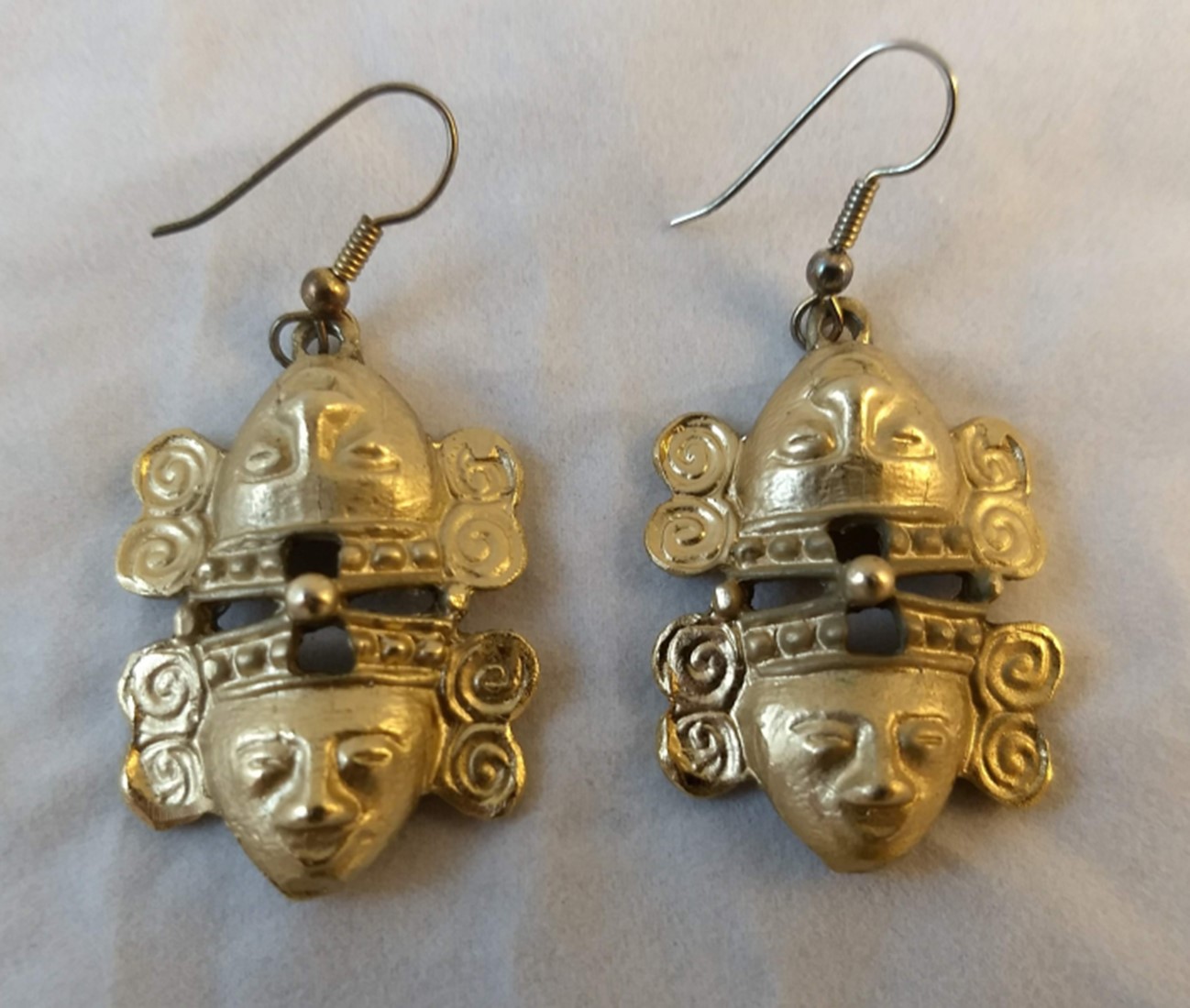Contrary to popular misconceptions, metalwork dates back to very ancient times in the Americas, with copperworking in the Great Lakes Region of North America starting as early as 5,000 BCE. By the first millennium BCE, the Andean cultures of South America had developed metalwork processes, and these practices spread up into the Isthmian region of lower Central America by the middle of the same millennium, and reached Mesoamerica long before the arrival of the Spanish in the 16th century. Highly skilled metalwork techniques including smelting, forging, lost-wax casting, depletion gilding, and granulation were developed in order to create elaborate decorative items, and symbolic works in gold, silver, and tumbaga (a mixture of gold and copper) reached a pinnacle of sophistication among the ancient Isthmian cultures.
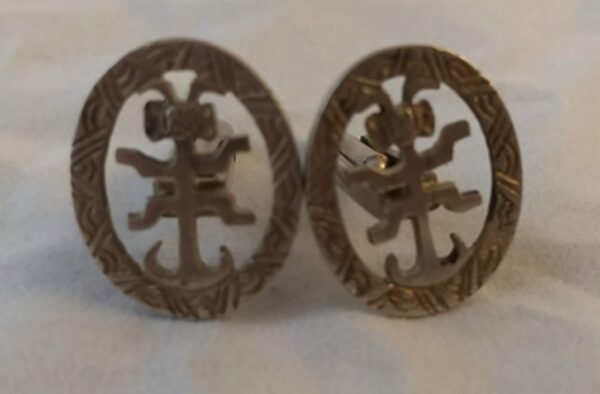
Original: Tolima culture, 5th-10th century
Reproduction: Colombian Mestizo cultures, 20th century
Reproduction: Base metal, L. 1.6 cm x W. 1 mm x H. 2.2 cm
BFPC collection #2018.33
These small cufflinks illustrate a reproduction of an anthropomorphic figure used in Tolima culture pendants made of tumbaga. Clearly a symbol of status, these large figures combine animal and human imagery into symbolic images, and the resulting creature likely represented a link between the spirit world and the physical world.
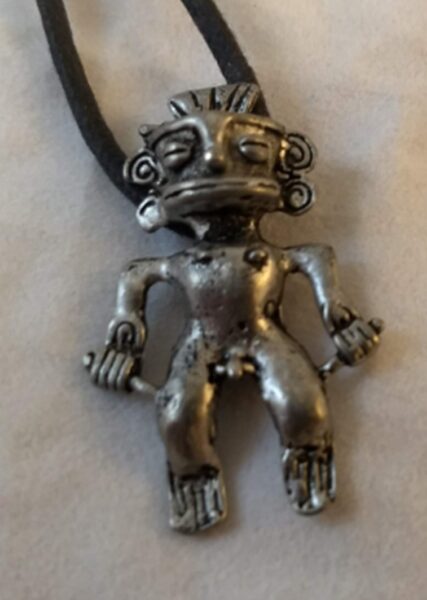
Original: Gran Chiriquí culture, 11th-16th century
Reproduction: Panamanian Mestizo cultures, 20th century
Reproduction: Base metal, L. 2.5 cm x W. 1 cm x H. 3.8 cm
BFPC collection #2018.30
The nude anthropomorphic male figure portrayed in this reproduction pendant strongly reflects the style of the Gran Chiriquí culture. The figure has a stylized face with a wide, slit mouth, slit eyes, and two spirals for ears. The figure holds an object in each hand that extends to the sides of its legs, and these objects may represent simplified versions of flutes or snakes, which are seen in similar pendants.
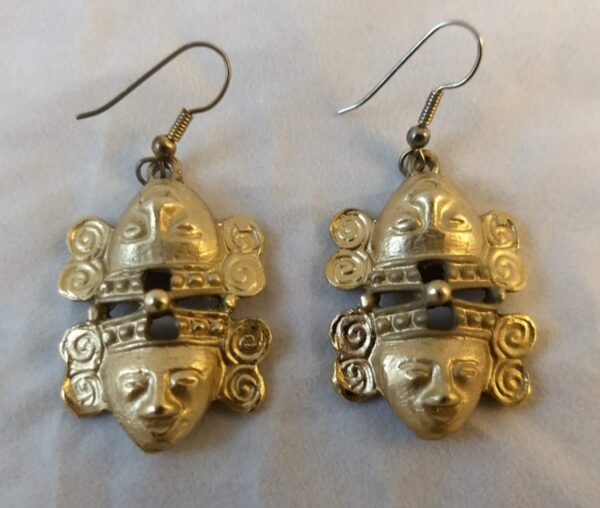
Original: Quimbaya culture, 1st-9th century
Reproduction: Colombian Mestizo cultures, 20th century
Reproduction: Brass and gold paint, L. 2.4 cm x W. 7 mm x H. 4 cm
BFPC collection #2018.31
While the faces of these reproduction earrings may resemble Gran Chiriquí motifs in some of its features, such as the double-spiral ears, other characteristics associate them more closely with the Quimbaya cultures of Colombia. Among these features are the relatively small, flat, slit eyes, the small slit mouths, and heavy, curved brows. Like the other objects in this display, such gold and tumbaga ornaments were decorative, but functioned to show high status.
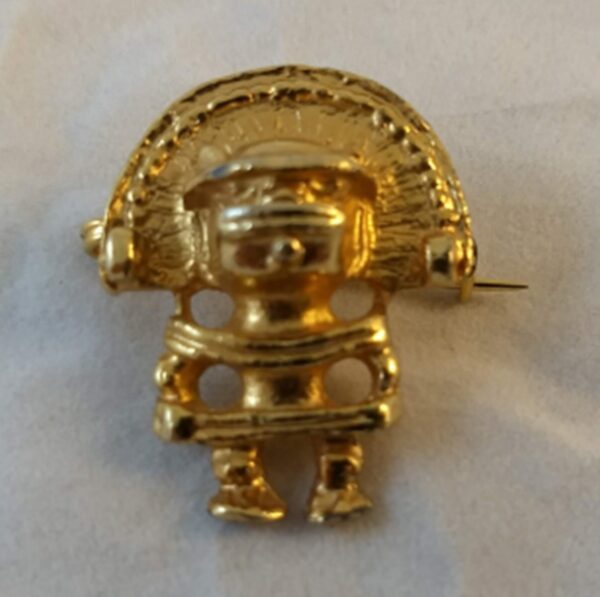
Original: Tairona culture, 10th-16th century
Reproduction: Colombian Mestizo cultures, 20th century
Reproduction: Brass with gold paint, L. 2.6 cm x W. 1 cm x H. 3.8 cm
BFPC collection #2018.32
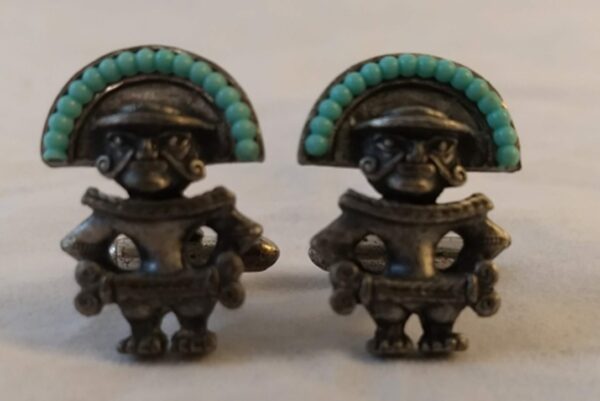
Original: Tairona culture, 10th-16th century
Reproduction: Colombian Mestizo cultures, 20th century
Reproduction: Base metal and plastic, L. 2.9 cm x W. 7 mm x H. 2.6 cm
BFPC collection #2013.34
This pin and this pair cufflinks all show representations of anthropomorphic figures made in the style of the Tairona culture. Each bold figure stands solidly, with legs slightly apart and feet facing forward, elbows bent, and hands on the hips; each figure also wears a wide decorative collar, a heavy belt, and a large, half-circle headdress that indicates high status. In addition, these figures illustrate upturned, stylized noses that may associate them with bats and indicate a supernatural hybrid. All such powerful figures are called caciques, a native word meaning “chief,” because they clearly represent high-status individuals.
For more information, you may contact the researcher(s) noted in the title of this exhibit entry, or Dr. Billie Follensbee, the professor of the course, at BillieFollensbee@MissouriState.edu

